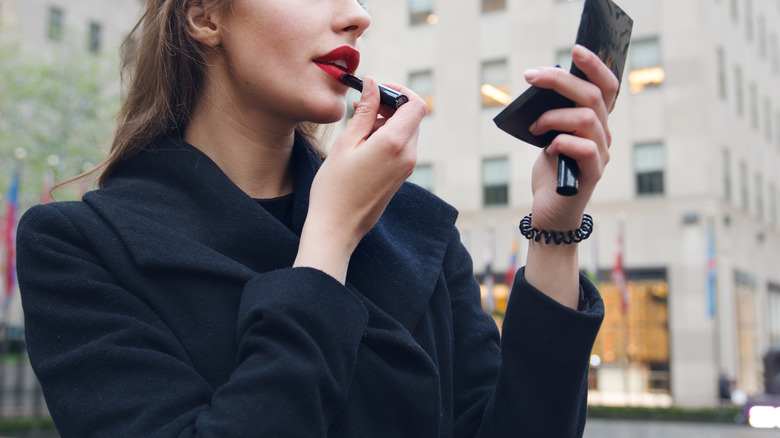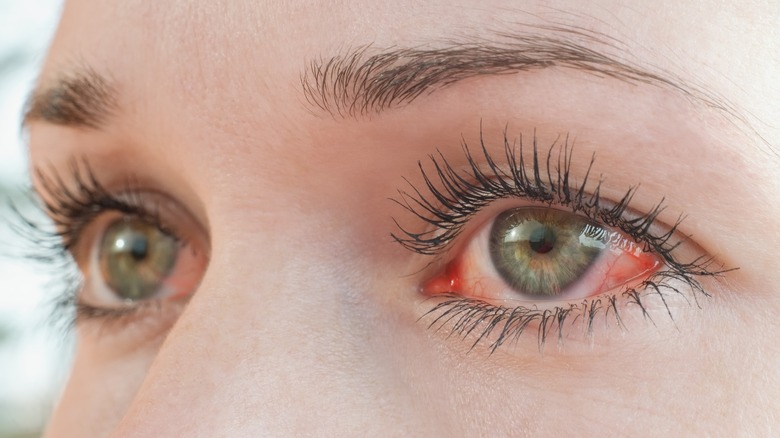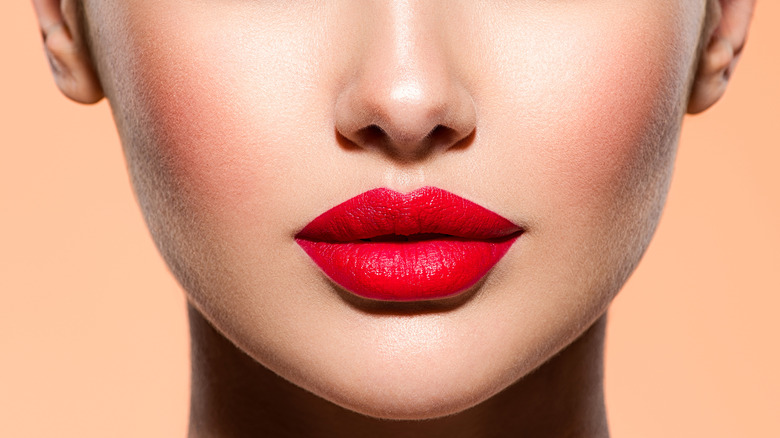Can Lipstick Double As An Eye Product?
Keeping a healthy stock of makeup products is an ongoing chore. Inevitably, we run low on lipstick or eyeshadow and have to either choose a different shade, which can be an outfit bummer, or we have to quickly improvise.
All makeup has a shelf life and an expiration date and it's worth paying attention to them. However, so many of us keep makeup much longer than we should. When makeup gets old, it can cause a bevy of problems. "The concern after the expiration date is that products may change composition the way a mixture is made up and therefore be more at risk of contamination from bacteria and molds," Dr. Emma Wedgeworth explained to Refinery 29. "If you already have a compromised skin barrier [e.g. dry, scaly, irritated skin] or an existing skin condition, you are at a higher risk of infection or irritation."
In these cases you might think grabbing lipstick and using it on your eyes would be a better solution, but that just isn't so.
Lipstick can cause allergies
Though there has been internet chatter in recent years which promises that applying red or orange lipstick to your undereye area will mask dark circles, there are some very good reasons to not do so.
First of all, red, pink, and orange lipstick contains a chemical known as carmine. Carmine is made of crushed insects known as cochineal. It's the same ingredient used in certain pink yogurts, juices, sausage, and other foods, per Wired.
If you can get over the fact that there are bugs in your lipstick, you should know that carmine has a tendency to cause allergies, and in some cases, they can be severe (via Kinder Beauty). It can also aggravate asthma. If you have ever experienced an allergic reaction on your lips to lipstick, think twice before applying it to your eyes. Since under-eye skin is very delicate and prone to fine lines, lipstick that contains carmine can be very harsh and worsen that sensitive area.
FDA safety testing for lipstick only applies to lips
While you may think that if a lipstick has passed a safety test to be able to be sold in stores, it has to be safe to use anywhere on your skin, that's not how it works. Cosmetic chemist Kelly Dobos explained to Lifehacker, "Using lipstick in the eye area is just one example of a potentially dangerous substitution because most of the red pigments approved for use in lipstick are not approved for use in the eye area due to the potential for irritation or allergic reaction.
The Food & Drug Administration strictly advises against swapping lipstick for eye makeup and vice versa. "Don't use any cosmetics near your eyes unless they are intended specifically for that use," the FDA writes on their website.
Also, since lipstick is used on the lips, it may carry bacteria from your lips to your eyes. "You may be exposing your eyes to contamination from your mouth, or to color additives that are not approved for use in the area of the eye," writes the FDA.


